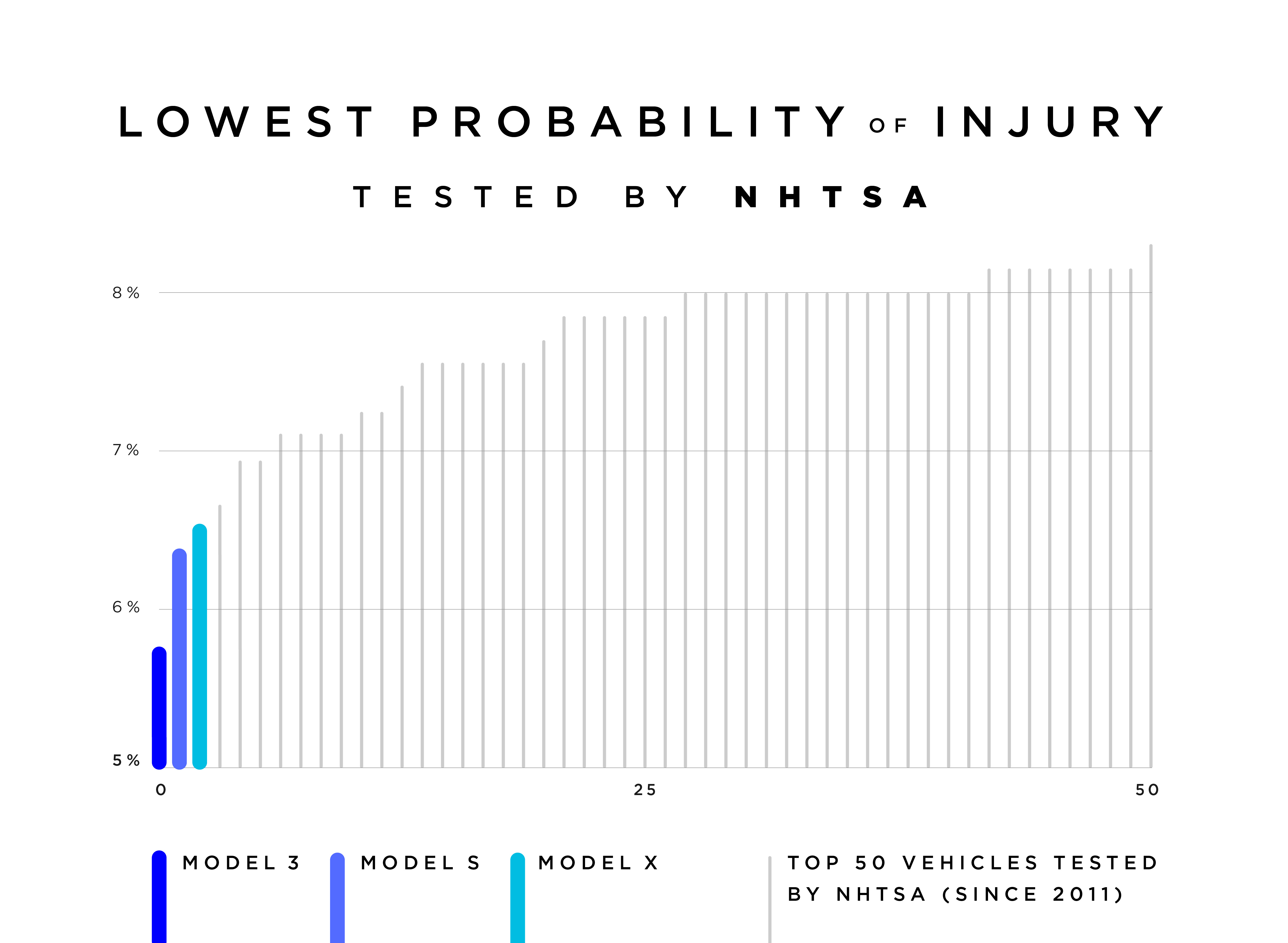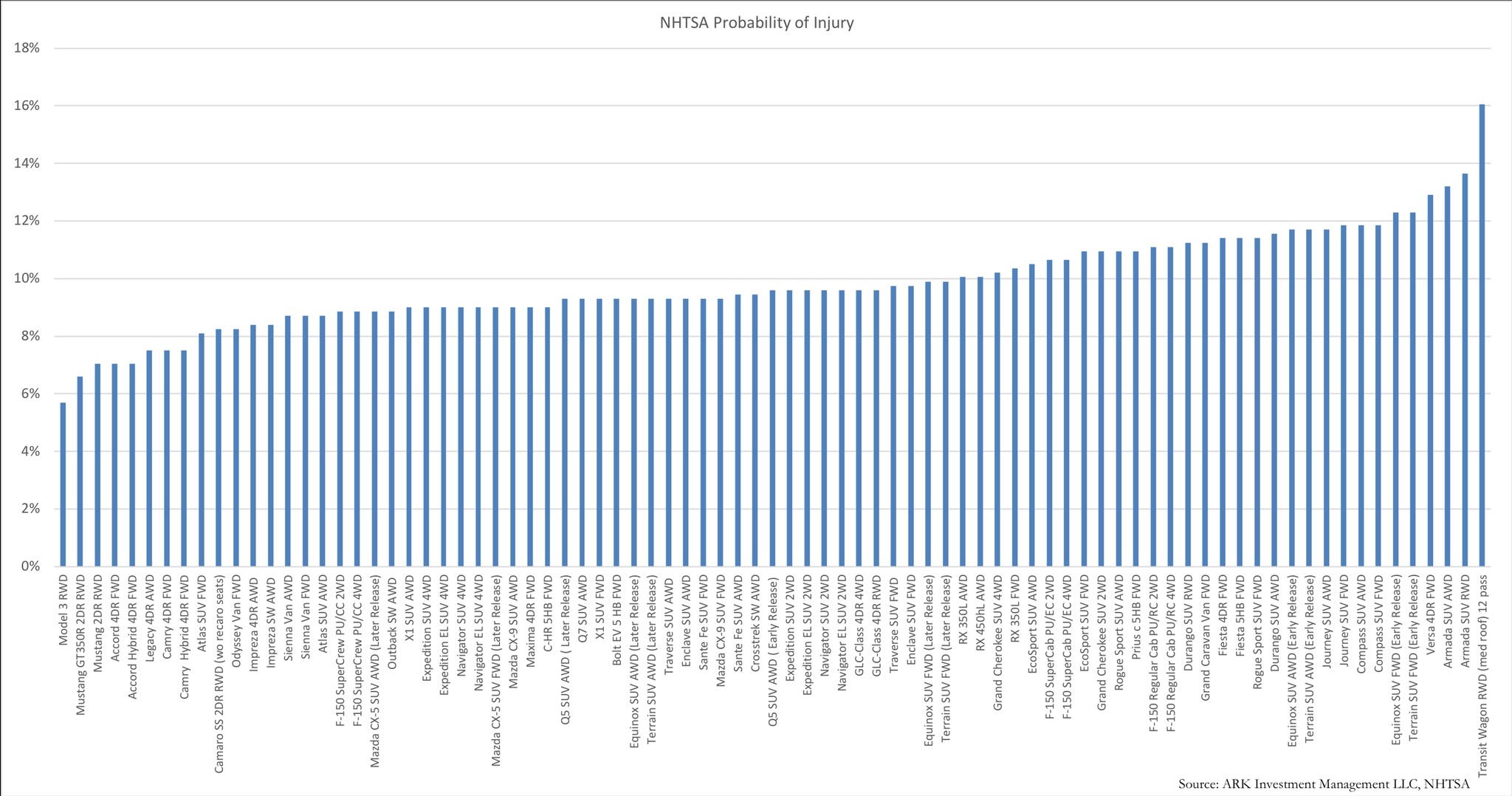Car Safety Tesla Model 3

Just over a week ago, Tesla published a report on vehicle safety for the 3rd quarter . Much has been said about what has been done and why it is so. But we love more numbers. Tesla issued data on accidents or similar events (most likely implied minor damage to the outer skin) with and without autopilot turned on:
- no autopilot, an accident occurred every 3.09 million km (1.92 million miles);
- with autopilot - 5.37 million km (3.34 million miles);
- on average in the United States - 792 thousand km (492 thousand miles), according to the latest data from the National Highway Traffic Safety Administration (NHTSA) - hereinafter referred to as the National Administration.
That is, without Tesila's autopilot, events associated with road accidents happen less frequently by 3.9 times, and with autopilot events - almost 6.8 times less often. If we compare Tesla itself, then with the autopilot a little less than 2 times less.
It should be clarified that Tesla herself displays all cases of damage to the car body, while not every accident case is included in the Office in the statistics. This is all to the fact that the figures for the United States can be higher, but on the other hand - expensive and new cars from Tesla. Perhaps this is a game with numbers, but they are pretty eloquent. It would not be bad for Tesla to compare herself with the BVM of the 3rd series (since there was a comparison at the level of competition). That would be fair in my opinion.
')
In addition, Musk added
that, according to the National Administration, in 2017, deaths occurred in road accidents every 138.5 million km (86 million miles) - the average for the United States, Tesla - every 515 million km (320 million miles). Again - impressive. But there is no separate data with and without autopilot. It would be clearer to compare separately with Volvo cars and their data for the United States.
Approximately 3 days after the data on the possibility of an accident, the National Authority published data on Model 3 regarding the possibility of injury during an accident.
Tesla has written an extensive article about this in her blog . According to these data, Model 3 is the safest car that the National Authority has ever tested. Yes, they do not make ratings, but simply assign a rating, 5 stars is the maximum. There are opinions that 5 stars are not enough. At one time, Model C broke the test bench . Insider IW
gave a little more information with a beautiful schedule, where Model 3 - in the first place.

Here's a video
crash test model 3.
From all of the above, I want to make a certain conclusion. The Model 3 car from Tesla is one of the safest, if not the safest car in the United States. And this is despite the fact that the chance of getting into an accident is several times less than on other cars, on average, in the USA. And this is all against the background that it is also an electric car. He stands in the forefront with other cars. A separate category no longer stands out - the safest among electric vehicles. No, among the cars. Yes, there are questions about the ignition of batteries, cars with batteries are not so much in comparison with traditional ICEs. But the cars themselves on the engine burn and it is unfortunately not a rare phenomenon.
At present, the architecture of cars from Tesla allows them to be made safer both by the design of the batteries on the whole bottom, and by the autopilot (even if it is not so now). In any case, these are certain security trends that other automakers can and should implement.
Perhaps, good sales of Ipase from Jaguar in September (710 AyPesov made up 3.7% of all sales of Jaguar), prompted their leadership to consider the issue of switching the brand to electric cars only.
Source: https://habr.com/ru/post/426271/
All Articles